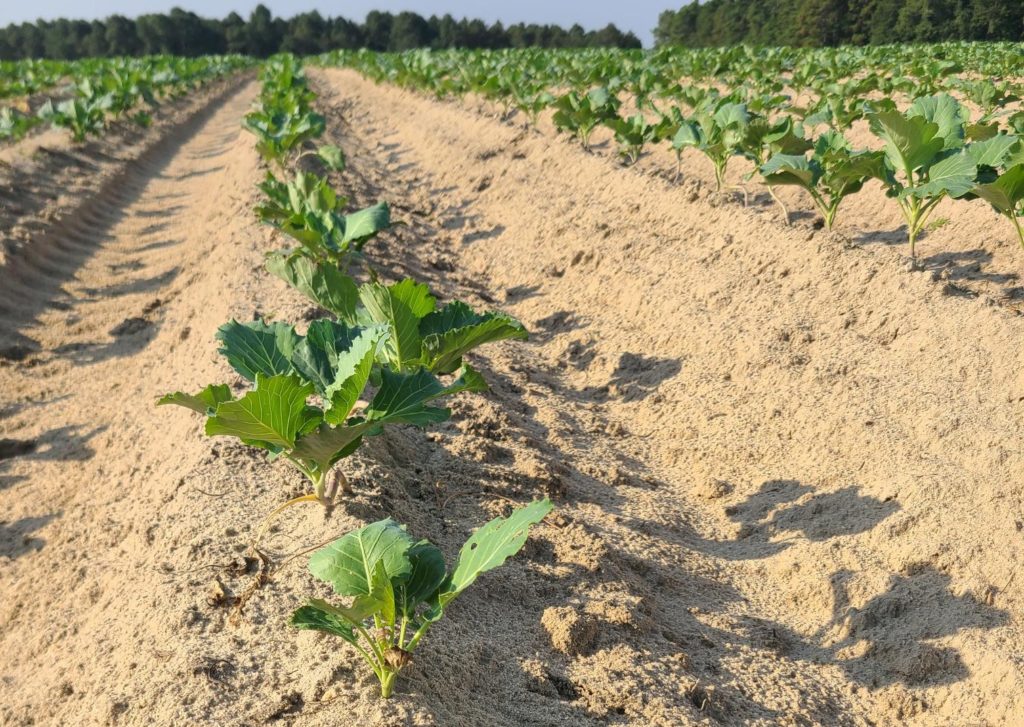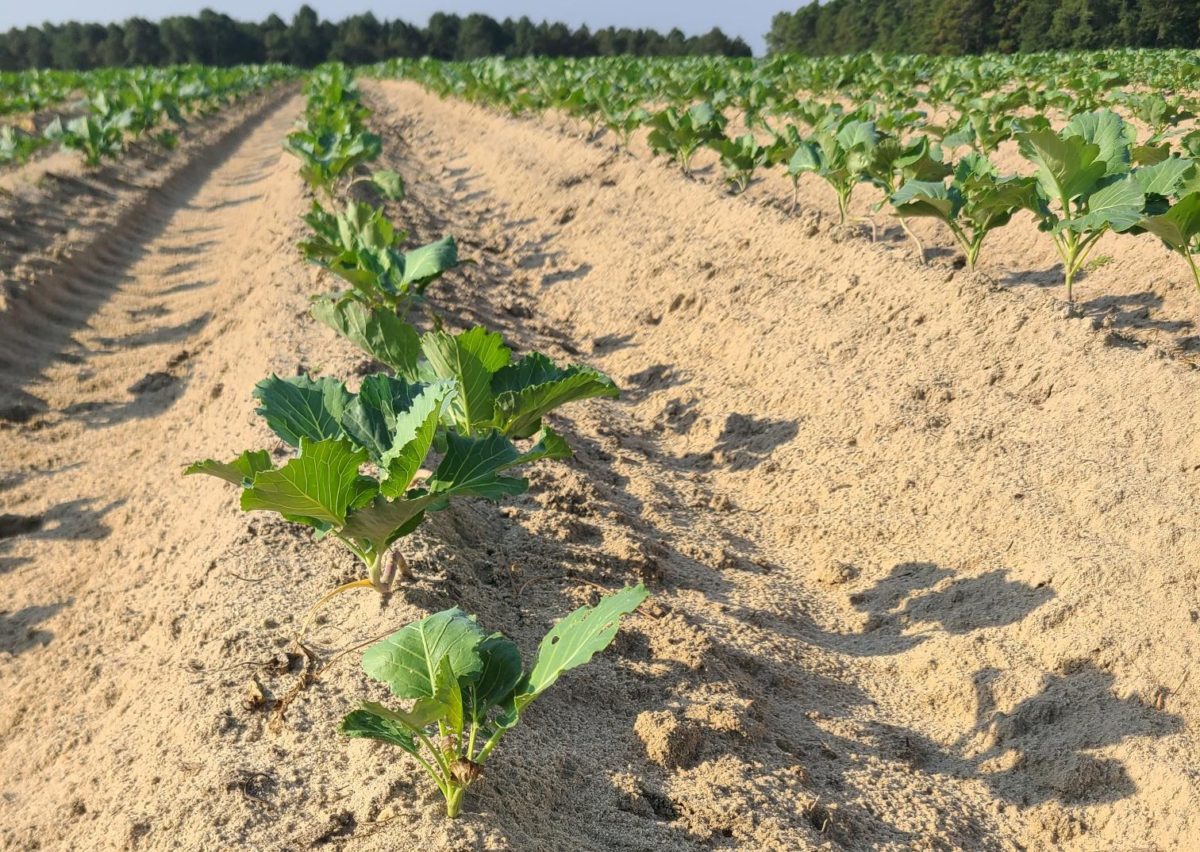Weekly Field Update
Clemson Extension agents provide updates in The South Carolina Grower this week about the status of various crops being produced throughout the state.

Midlands
Rob Last
- After another hot, dry week, a welcome break is being seen with forecast cooler temperatures and welcome rainfall. Keeping an eye on the tropical disturbance in the Gulf of Mexico will be important as we move into mid to late week. While current tracks indicate we will likely receive precipitation, being prepared early will be of benefit.
- With that in mind, keep scouting crops regularly to assess for pest and disease activity.
- Applications of fungicides, where appropriate, will be more effective applied before the rainfall.
- Monitor crop nitrogen and potassium levels, as these nutrients are readily soluble and mobile in the soil.
- Remember to check plants carefully for signs of disease when we are looking at transplanting crops in the coming weeks.
Pee Dee
Bruce McLean
- As many of you know, this is my last week with Clemson Extension. I have taken a position with North Carolina Cooperative Extension. The last 4-plus years with Clemson has been a great experience, and I have had the pleasure to meet many fine folks here. Seeing how hard-working, determined, and innovative the growers in South Carolina are, gives me great hope for agriculture in the state. I have been blessed with the opportunity to work with great growers, who have taught me as much, if not more, than I have been able to teach them. It has been my pleasure to work with ya’ll. Keep growing.
- Summer vegetables are harvesting pretty well. The last couple of weeks’ heat took a bit of a toll on some of the crops. Disease and insect pressure are relatively high, so scout frequently and treat accordingly.
- Muscadines have really started to color up. Harvest is getting close. Vineyards closer to the coast and further south are a little further along. Noble is anywhere from 50% to 75% mature, with brix readings of 12% to 17% (sugar). Carlos is anywhere from 35% to 50% mature, with brix readings of 12% to 16%. Doreen is typically around 5% to 10% mature, with brix readings of 12% to 24%. Checking brix of the crop is the only good way to determine the correct timing of harvest with wine/juice grapes. Weather can have a dramatic impact on those readings, too. Periods of dry, sunny conditions can significantly increase brix readings, and periods of rain can decrease those readings by pushing water into the fruit. Most wineries and juice buyers are looking for an average brix reading of 12.5% to 15.5%. Currently, we have Tropical Storm Idalia forecast to have an impact on eastern S.C. on Wednesday and Thursday. Depending upon how much rain we receive from the storm, it could impact the timing of harvest. Moderate rains will delay the harvest of grapes for 3 to 7 days, so the excess water taken up by the plant and pushed into the fruit can diminish, and the fruit return to an acceptable level of sugar content. Storms this time of year can be problematic and at a minimum affect fruit and juice quality. In worse case, high winds can cause fruit to drop, reducing harvestable yield.
Upstate
Andy Rollins
- Hot pepper production is coming in well. We are seeing some small issues with Phytophthora causing root and crown rot, but just in low places. Ridomil is still an option, although there are resistant populations. Orondis Gold and potassium phosphites would be better recommendations, especially early in crop development.
- Muscadines harvest has begun, although slow. Extreme heat and drought in some areas are thought to have slowed down harvest. Irrigation is being done now to keep plants from undergoing too much stress.
- We are still harvesting multiple blackberry varieties, but peach production in Upstate is over on most, if not all farms. Many peach farms had no crop to begin with. Strawberry bed and soil preparations are in full swing. Some are trying injection rather than shank fumigation. This choice results in a safer application of fumigates, and in many situations, better weed and disease control.










